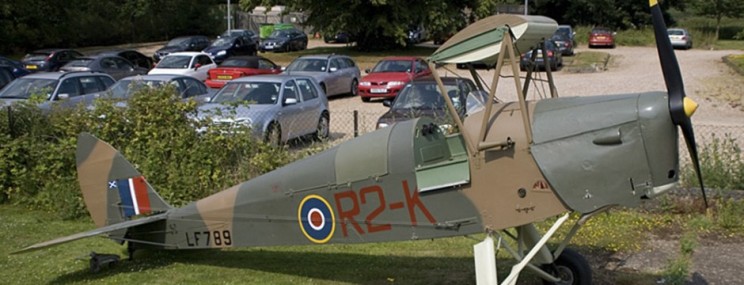
Military vehicles and robots date as far back as WWI with small, remote-controlled and tracked, disposable explosive devices. WWII saw even more innovative designs with the Soviet Army developing full-sized remote-controlled tanks between 1930 and 1940. Even the Brits had a hand in remote controlled tanks with their Matilda MK2 Infantry tank, the ‘Black Prince’.
While nothing compares to modern day military vehicles and autonomous systems, our history is filled with incredible engineering feats. With so many different autonomous military vehicles and systems, we’re only focusing on a few of the standouts.
Early Military Vehicles
Today’s drones or autonomous robots have surpassed what many initially thought was impossible. Fact is, had it not been for some of the earlier innovations, who knows where the world’s military complex would be.
One of the first attempts to create a remote-controlled military vehicle was the French Crocodile Schneider Torpille Terrestre. Designed in 1915, the electrically powered vehicle carried a 40 kg explosive charge with mission objectives to attack German barbed-wire and concrete defences.
Even with a second prototype, Type B, the performance was underwhelming and also overshadowed by the newly introduced battle tanks. Surprisingly, it saw limited service in June 2016 but, yet again, proved unreliable. American inventor, Elmer Wickershaw, patented a similar vehicle in 1918, the Wickersham Land Torpedo, but it never went into service.
The Goliath Drone
In 1930, Aldolphe Kegresse developed a device that would subsequently form the basis of Germany’s WWII Goliath drone. It housed 60 or 100 kilograms (130 or 220 lb) of high explosives capable of performing several tasks, from destroying tanks, buildings or bridges to disrupting infantry formations. Goliaths were essentially a kamikaze-style, single-use vehicle as the detonation of their warhead would completely destroy the unit.

They were used at Anzio in Italy (April 1944) and against the Polish resistance during the Warsaw Uprising in 1944. A few Goliaths were also at Normandy during D-Day although most of them were rendered inoperative as artillery blasts damaged the communications cables. While the Goliath was extremely effective, it was expensive to manufacture and repair on the battlefield when needed. Judging from appearances though, it has certainly helped lay the foundation for future advances in autonomous technologies.
Recommended Read: Goliath Tracked Mine
Matilda II Black Prince Remote Controlled Tank
In 1941, the British developed a radio-controlled derivative of the Matilda II infantry tank, called “Black Prince”. The main purpose of the Black Prince would be to draw the fire of concealed anti-tank guns or for demolition missions. Unfortunately, due to the exorbitant costs of converting the transmission system to Wilson type gearboxes, the military cancelled an order for 60 tanks.
The First ‘Unmanned Aerial Vehicles’ – Kettering Bug
Would you believe that some early UAVs were actually designed and built during WWI? Orville Wright and Charles F. Kettering supervised the development of the first operational UAV in 1918 as a secret project. The US government developed the world’s first “self-flying aerial torpedo” under Kettering and was named the “Kettering Bug”.
Even with a less than ideal test launch, the Kettering Bug was a success and the government ordered 20,000 but only 50 were produced before WWI ended on November 11, 1918. No Kettering Bugs were ever used in combat.
The “Queen Bee”
Between WWI and WWII, several countries developed UAVs but mainly as target practice for their jets. At this time, the term “drone” appeared on an unmanned aerial vehicle called the de Havilland DH.82B “Queen Bee”. It was a low-cost radio-controlled aircraft with the sole purpose of realistic anti-aircraft (AA) gunnery training. 412 “Queen Bees” were built between 1933 and 1943. The Fleet Air Arm and the Royal Air Force (RAF) operated the majority of the UAVs.

Radio Controlled Bombers
Toward the end of WWII, at least 25 B-17 bombers were fitted with radio controls and television cameras. They were loaded with 20,000 lb (9,100 kg) of high explosives and named BQ-7 “Aphrodite missiles” for Operation Aphrodite. The operation involved remotely flying “Aphrodite drones” toward their intended targets accompanied by the CQ-17 “mothership” control aircraft.
While the first four drones successfully hit their targets, i.e. Mimoyecques, the Siracourt V-1 bunker, Watten, and Wizernes on 4 August, they caused very little damage. Adding insult to injury, the project came to a sudden halt when an unexplained mid-air explosion of a B-24 occurred over the Blyth estuary. In order to avoid the possibility of a similar accident, British authorities scrapped the Aphrodite project in early 1945.
Drone development continued after WWII where some were initially used for aerial-reconnaissance during the Vietnam War. They also began using drones as decoys, missile launch platforms and distributing propaganda.
The “Shakey” Unmanned Ground Vehicle
In the 1960’s, DARPA (Defense Advanced Research Projects Agency) developed the first of many cutting-edge unmanned ground vehicles (UGV) named “Shakey”. This robot was a wheeled platform with a TV camera, sensors, computer guidance and navigation systems.
Shakey was the first UGV that operated completely autonomously on- and off road at operational speeds. It could complete a series of tasks based on commands including picking up wooden blocks and placing them in specific areas. DARPA subsequently worked on a series of autonomous and semi-autonomous ground robots, often alongside the U.S. Army as part of the Strategic Computing Initiative. They continue to do groundbreaking work in this field.
Modern Military Vehicles
Looking at the world of autonomous military vehicles and systems, it is a far cry from earlier days. Some unmanned vehicles are used for guard or sentry duties, explosive ordinance disposal, logistics, troop support, reconnaissance and ballistic weapon platforms among others.
Think of the US “MQ-9 Reaper” (Predator B), British “Watchkeeper” and the autonomous artillery system, “Dragon Fire II”. This system automatically loads weapons and calculates targeting, enabling a 12-second fire support for troops.
In 2005 alone, military robot usage increased from 150 to 5,000 where many were used in Iraq to disarm more than 1,000 roadside bombs. The US Army purchased 7,000 of these unmanned units by 2013 with 750 destroyed in the line of duty.
Believe it or not, militaries around the world are developing robots equipped with machine guns and grenade launchers that may one day replace soldiers. Just take a look at what Russia achieved with their FEDOR fighter with Android Technics. While the primary function was space travel and performing dangerous tasks, watch until the end. This robot can shoot, drive, walk, drill precision holes and manage obstacles. They believe it is the future of modern warfare. What do you think?
The Future Of Warfare
Autonomous military vehicles, robots and other systems are likely to gain even further traction in the future as a result of the continued investment. John Basset, a military expert, believes that combat robots will play a huge role in US fighting forces within the next 10-15 years.
Basset added, “Intelligent robotic weapons – they’re a reality, and they will be much more of a reality by 2030. At some point around 2025 or thereabouts the US Army will actually have more combat robots than it will have human soldiers.”
For more interesting articles on emerging technology, advanced engineering and manufacturing, please visit our blog site. We’ve been working with the defence industry for more than 6 years and specialise in plating services, CNC machining and all kinds of fabrication. Whatever your engineering project requirements, our team of experts are ready to help. Call us today on 01495 707962 or visit our website for more information.
This site uses Akismet to reduce spam. Learn how your comment data is processed.


 Mail:
Mail: 




Leave a Comments